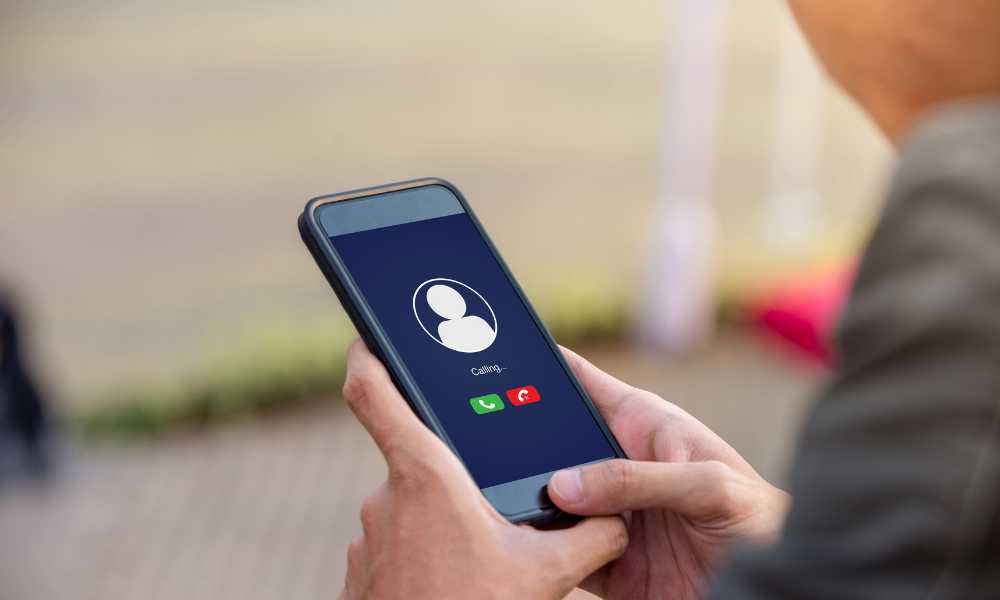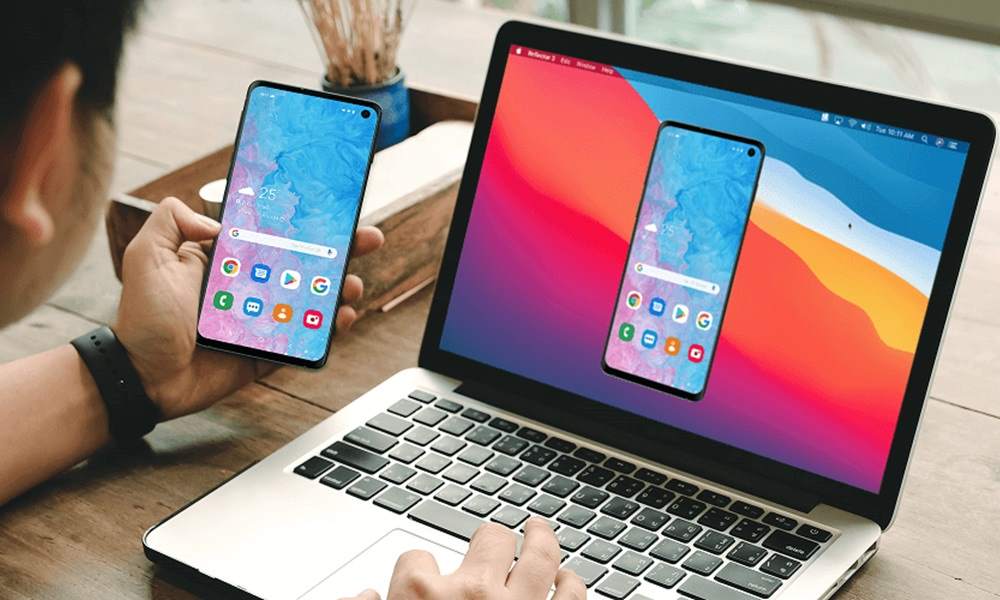How to Get Phone Call History: 6 Proven Methods to Access Call Records

Understanding how to get phone call history has become increasingly important for those needing to monitor communications for family safety, account management, or addressing suspicious activity concerns.

While privacy features protect call records from unauthorized access, several legitimate methods exist for retrieving call history when you have appropriate authorization or account access rights.
In this comprehensive guide, we'll explore how to get someone's phone call history, the tools available for call record retrieval, and important considerations to keep in mind when accessing telecommunications data.
What Information Is Available in Phone Call History
Understanding how to get my phone call history involves knowing what types of information are typically included in call records and what insights they can provide.
Standard call history records typically include the phone numbers involved in the call, precise timestamps showing when calls were placed or received, call duration for completed connections, and call type classification (incoming, outgoing, or missed).
More detailed records may include approximate location data based on cell tower connections, call routing information, or even conversation recordings in certain monitoring contexts.
SafeMyKid - The Most Comprehensive Solution to Get Phone Call History

When looking for reliable methods on how to get another phone number's call history, SafeMyKid offers the most comprehensive solution through its advanced call monitoring capabilities.
This powerful application provides complete visibility into call records with extensive detail and historical data access.
SafeMyKid works discreetly to record all incoming and outgoing calls, along with detailed information about each communication.
The application's sophisticated technology makes it particularly effective for parents monitoring children's communications, employers overseeing company devices, or others with legitimate monitoring needs.
Key Features of SafeMyKid to Get Phone Call History
When it comes to how to get call history of a phone number in complete detail, SafeMyKid offers advanced capabilities that make comprehensive call monitoring both effective and insightful:
Real-Time Call Tracking - Instantly access call logs complete with contact details, timestamps, and call durations for precise conversation monitoring.
Parental Control Tools - Monitor call history, messages, GPS location, and app usage to maintain a clear picture of your child's digital activity.
Stealth Mode - Runs silently in the background, enabling discreet tracking without alerting the device user.
Access to Deleted Call Logs - Retrieve call records even if they've been deleted, ensuring no important information is lost.
Remote Dashboard Access - Conveniently manage and review all data through a secure, user-friendly online control panel.
How to Set up SafeMyKid to Get Phone Call History
Setting up SafeMyKid for call monitoring requires just a few straightforward steps to begin tracking all call activities.
Step 1. Create Your SafeMyKid Account
Visit the SafeMyKid website to register and create your monitoring account.
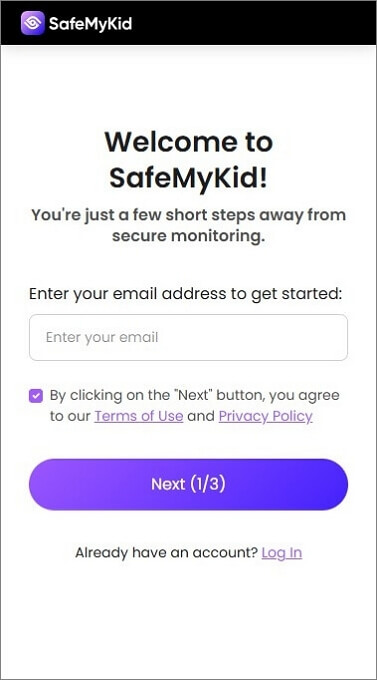
Step 2. Set up The SafeMyKid App on the Target Phone
For Android: Install the SafeMyKid app directly on the target device (requires brief physical access). For iOS: Use iCloud credentials to enable monitoring without physical access to the device.
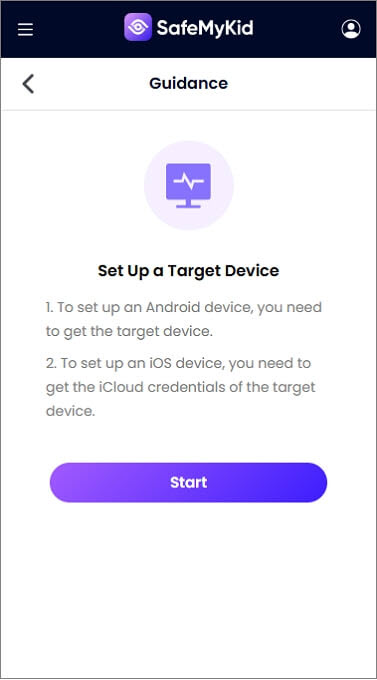
Step 3.Begin Accessing Phone Call History
Access your secure dashboard to view complete call history, including contact details, timestamps, and call durations.
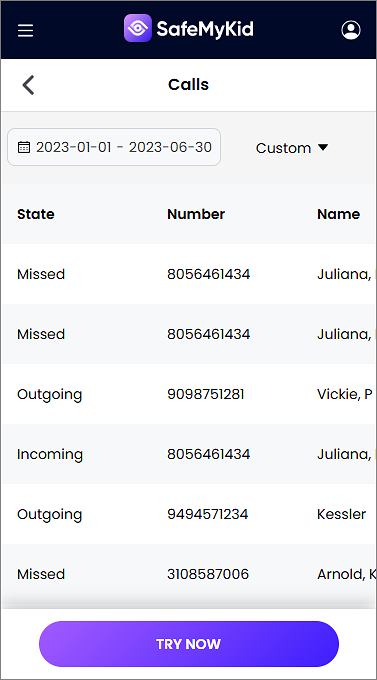
5 Other Methods to Get Phone Call History
While SafeMyKid offers the most comprehensive solution, several other approaches can help you access call records. Here's an overview of 5 additional effective methods.
1. Official Carrier Account Portal
Every major mobile carrier provides an online account management portal where account holders can access detailed call records for numbers on their plans. These official portals offer the most authoritative source for call details directly from the telecommunications provider.
Accessing these records typically requires logging into the carrier's website with your account credentials and navigating to the call history or usage details section.
The portal will display call records for all numbers on the account, including timestamps, durations, and the numbers involved in each communication.
Pros:
- Official records directly from the telecommunications provider
- Comprehensive details for all numbers on the account
- Historical data often available for several months
- No additional software or tools required
Cons:
- Limited to numbers you personally own or manage
- Requires account holder credentials or authorization
- Typically shows only metadata without call content
- Usually excludes calls made through apps like WhatsApp
2. The Device's Built-in Call Log

Every smartphone includes a native call history feature that stores records of recent calls directly on the device. This built-in functionality provides immediate access to call records without requiring additional applications or account logins.
This direct method works by simply opening the phone app and navigating to the call history or recents tab, which displays a chronological list of incoming, outgoing, and missed calls.
This approach provides quick insights but is limited to calls that haven't been deleted and require having the phone in hand.
Pros:
- No additional tools or software required
- Shows exactly what appears in the phone's native call log
- Works across all phone types regardless of carrier
- Provides immediate access without setup procedures
Cons:
- Requires physical access to an unlocked phone
- Limited to non-deleted calls stored on the device
- Often restricted to recent history (typically 30-90 days)
- No remote access capabilities
3. Phone Bill and Detailed Call Records
Monthly phone bills include detailed call logs that provide comprehensive records of all communications during the billing period. These official documents can be accessed through your carrier's online portal or by requesting printed statements.
This approach works particularly well for obtaining official records for legal or documentation purposes, as carrier bills provide authoritative call information directly from the service provider.
The level of detail varies by carrier, but most bills include the date, time, duration, and phone number for each call.
Pros:
- Official documentation with timestamp verification
- Comprehensive coverage of all calls during billing periods
- Available even without smartphone access
- Often provides extended historical data (12+ months)
Cons:
- Limited to complete billing cycles rather than real-time data
- Requires account holder access or authorization
- May require special requests for detailed billing
- Typically shows only call metadata without content
4. Cloud Backup Services

Phone backups stored in cloud services like iCloud for iPhones or Google accounts for Android devices often contain call history data that can be accessed with appropriate account credentials. This method works particularly well when the physical device is unavailable or has been reset.
By accessing these cloud backups, you can potentially view call history information even if it has been deleted from the phone itself.
The process typically involves logging into the cloud service account and navigating to the backup data, sometimes requiring specialized tools to extract the call information.
Pros:
- Can reveal call history deleted from the physical device
- Accessible remotely without needing the phone
- Often contains extensive historical data
- May include other valuable information beyond calls
Cons:
- Requires cloud service credentials (Apple ID or Google account)
- Sometimes specialized software to extract data
- Depends on regular backups being enabled
- Success varies based on backup settings and frequency
5. SIM Card Call History Extraction

SIM cards store limited call history information that can be extracted using specialized card reader devices or certain smartphone applications. This approach accesses data stored directly on the SIM rather than from the carrier's network records.
Using either a physical SIM card reader connected to a computer or specialized applications that can read SIM data, you can extract available call logs stored on the card itself. This method is particularly useful when needing to check call details from a phone that is damaged or inaccessible.
Pros:
- Works without carrier account access
- Can retrieve data from phones that are damaged or powered off
- Bypasses phone security measures in some cases
- One-time process without ongoing monitoring setup
Cons:
- Very limited data compared to carrier records
- Requires physical access to the SIM card
- Many modern phones store minimal call data on SIM
- Technical equipment or specialized apps required
Why You Might Need to Access Phone Call History
There are several legitimate reasons why someone might need to retrieve detailed phone call records beyond basic device history.
Parents often need to review their children's calling patterns to ensure appropriate communications and monitor for potential concerning contacts or excessive usage.
Business professionals frequently require detailed call logs for accurate expense reporting, client billing, or documenting important conversations for compliance purposes.
Individuals may need to recover call details after accidental deletion, verify important call timing for personal records, or locate a specific contact from a previous conversation.
Additionally, those suspecting unauthorized use of their device or account might review call history to identify any suspicious communication patterns that could indicate security concerns.
Understanding these legitimate needs for call record access provides context for exploring the various methods available for retrieving detailed call history.
Legal Considerations When Accessing Call History
Before attempting to get phone call history, understanding the legal implications is essential to avoid potential consequences:
Account Ownership - In most jurisdictions, you have legal rights to access call details for numbers you personally own or pay for, such as family plans where you are the primary account holder.
Consent Requirements - Accessing call details for another adult's phone without their knowledge may violate privacy laws in many regions, though parental monitoring of minor children typically has broader legal allowances.
Business Context - Employers generally have legal rights to monitor company-provided phones when clearly disclosed in policies, though personal use expectations should be clearly communicated.
Carrier Terms of Service - Unauthorized access to carrier accounts may violate service terms, potentially resulting in account termination or other consequences.
Data Privacy Regulations - Various local and international laws govern telecommunications data access, creating jurisdiction-specific requirements that must be followed.
Always research the specific laws applicable to your location and situation before attempting to access call details to ensure your monitoring activities remain within legal boundaries.
Situations Where Call History Access Is Necessary
Understanding the legitimate contexts for accessing call history helps ensure this capability is used appropriately and responsibly:
Parental Oversight - Parents monitor their minor children's communications to ensure safety and appropriate usage.
Account Management - Primary account holders reviewing family plan usage for billing verification or usage management.
Business Monitoring - Employers track usage of company-provided phones to ensure appropriate business use and compliance with policies.
Security Concerns - Identifying suspicious activity or potential fraud associated with your personal accounts.
Technical Troubleshooting - Resolving carrier billing disputes or service issues by reviewing detailed call records.
Legal Documentation - Obtaining official call records for legal proceedings or documentation requirements.
These legitimate scenarios highlight why understanding how to get phone call history serves important protective and management functions when used appropriately.
Frequently Asked Questions about Getting Call History
Here are answers to common questions about accessing call records:
1. Can I get call history for any phone number?
You can only legally access complete call history for numbers you have proper authorization to monitor, such as those on your personal carrier account, your minor children's phones, or company devices you manage with appropriate policies.
Accessing call records for numbers outside these categories typically requires proper legal authority or the account holder's explicit consent.
2. Can I see the content of calls in the call history?
Standard call detail records available through carrier portals or phone bills show only metadata like phone numbers, timestamps, and durations rather than conversation content.
Recording or accessing actual call content typically requires specialized monitoring applications like SafeMyKid installed on the target device and has additional legal restrictions in many jurisdictions.
3. How far back can I access call history?
The time period available varies by method and carrier. Carrier account portals typically maintain call history for 12-24 months, while phone device logs usually store a few months of recent calls.
Cloud backups may contain call history based on backup frequency, and monitoring applications like SafeMyKid can only record calls from the point of installation onward.
4. Can someone tell if I'm checking their call history?
When using official account access methods like carrier portals or billing statements, the check leaves no trace on the target phone itself.
However, monitoring applications installed on the device may potentially be detected through battery usage patterns, storage analysis, or security scans unless they're specifically designed for stealth operations like SafeMyKid.
5. How can I recover deleted call history?
Deleted call history may be recovered through several methods: specialized data recovery applications that scan the phone's storage, cloud backups that were created before deletion, or monitoring applications that captured the data before it was removed from the standard call log.
Conclusion
Understanding how to get phone call history involves navigating both technical methods and important legal considerations.
While multiple approaches exist, from carrier account portals to specialized applications like SafeMyKid, the appropriate choice depends on your specific situation, legal standing, and the level of detail required.



